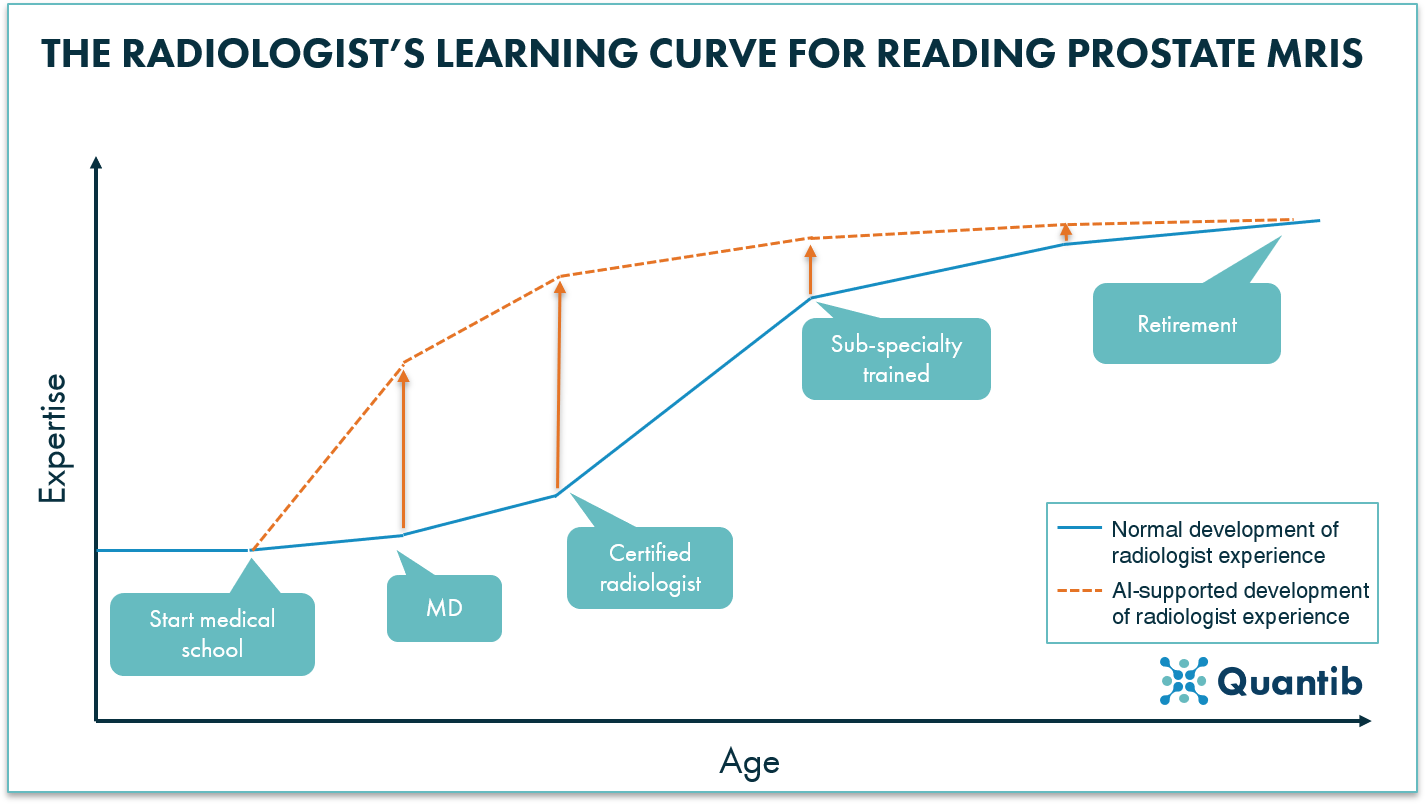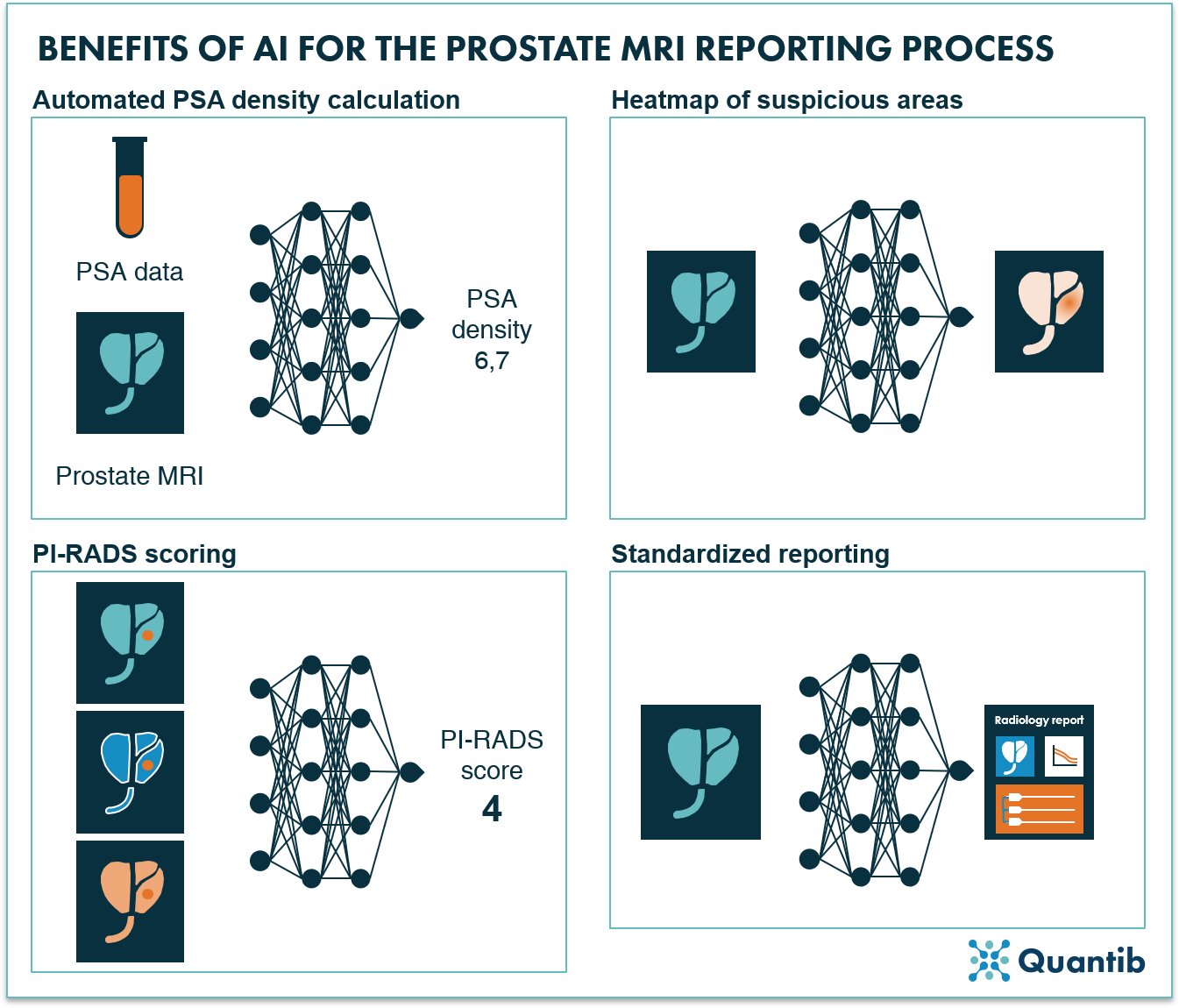Most of us are familiar with the adoption curve. It is a nice arch resembling a normal distribution with on one end of the spectrum the innovators, there are only a few of those, then the early adopters, a slightly larger group, then a big bunch that belongs to the early and late majority, and closing off with the laggards.
This theory holds true in many industries, including healthcare. Over the past few years, we have seen an immense rise of artificial intelligence (AI) applied to healthcare cases, with radiology being a praiseworthy frontrunner. Many applications within this field have seen the light of day, ranging from image reconstruction to image analysis to support for standardized reporting. With so many AI software options, it may be hard to choose where to start with the implementation. It may be even tempting to wait and hold off for a while until other hospitals have tried it first, more scientific proof is gathered, or AI companies have spent much more development hours on optimizing their user experience.
In this article, we discuss why this is exactly what you should not do in the case of prostate MRI reporting. Continue reading if you are wondering how AI for prostate MRI can make radiologists’ lives easier and how it can do so starting tomorrow.
Become an expert in prostate MRI
Reading prostate MRIs is not an easy task. It involves a long learning curve, meaning it takes time to master the skill. AI software for prostate MRI reading is generally developed using a large batch of MRI scans, a number so large, that it will take years, if not more for a radiologist to process an equal amount of scans and generate the associated expertise. Training software to extract this knowledge, and for it to be able to apply it to new patient data and provide valuable insights will offer radiologists know-how and support during their reading process. Even a novice radiologist will have access to expertise which will otherwise need years to gain.

Figure 1: Without AI a radiologist starts his learning curve when he/she starts medical school (blue solid line). The gained expertise for reading prostate MRIs will increase time, with the strongest slope during sub-specialty training. Implementing AI software to support radiologists to use highly specialized knowledge earlier on in their careers.
Reduce workload while prostate MRI volumes increase
Speak to any abdominal radiologist and they will confirm: the amount of prostate MRIs acquired yearly is growing. Changes in the guidelines both in the US and in Europe advise for an MRI pre-biopsy in the diagnostic pathway of prostate cancer. Naturally, this increase in scans leads to an increase in workload, which will become a problem for radiologists to manage as the number of hours in a day did not change. Educating significantly more radiologists to perform the challenging task of reading prostate MRIs would be one way to handle this issue, however, speeding up the scan assessment and report creation process to decrease the time spent per case is most likely a much more feasible option. AI offers opportunities to optimize many steps in the reading process. What to think of automated PSA density calculation which is even more accurate as they are based on a precise segmentation instead of an ellipsoid-based calculation that only approximates the volume of the prostate gland? Or smart heatmaps that help radiologists quickly scan prostate MRIs looking for abnormalities? Another useful assisting tool is PI-RADS scoring support, providing easy step-wise implementation of the assigning of a PI-RADS score. As a last example: automated report creation, where the software generates an exhaustive, user-friendly report making the urologist smile from ear to ear.

Figure 2: four examples of how AI implementation in the prostate MRI reading workflow can realize benefits that can lead to a reduced workload.
Shout it from the rooftops: we use state-of-the-art AI for prostate MRI!
Using advanced technology for diagnosis and treatment draws both physicians and patients. Look at the famous surgical robot: surgeons are eager to work with it and patients become more and more eager to have their surgery performed using this piece of top notch tech. AI for image analysis has not been widely used to advertise (yet), while it can work wonders to draw more talent to apply at a hospital. Additionally, a medical institute that broadcasts that it standardly deploys AI software to support the medical image analyses process and provide a built-in second opinion, may inspire more patients to choose this facility for their care. After all, which patient would not like to have a standard second opinion built into the diagnostic process?
Design the future of AI for prostate MRI
AI radiology companies are constantly improving their software. This means there is a constant hunt for valuable input on how best to advance these products. Input best given by radiologist, on desired software features, which button should go where, preferred integration options, etc. Hence getting involved early in the process will provide radiologists, urologists, and other physicians involved with a chance to influence the way the software will look and operate in the future. In other words, it provides radiologists with an opportunity to shape their own future.
An additional advantage is that there may still be room for negotiation on price. The more extensive the software gets with development over time, the higher the development costs, the more expensive the price tag. Jumping on board now may help you secure a better price.
Don’t risk staying behind on AI for prostate MRI
AI in healthcare has shown impressive growth over the past few years. It is safe to assume that it will be implemented, maybe not tomorrow, but for sure in the coming years and decades, it will increasingly be part of patient care in one way or another, until it can no longer be ignored. One can decide to procrastinate and push the adoption of AI at their healthcare facility forward. But why postpone until tomorrow what can benefit you today?

